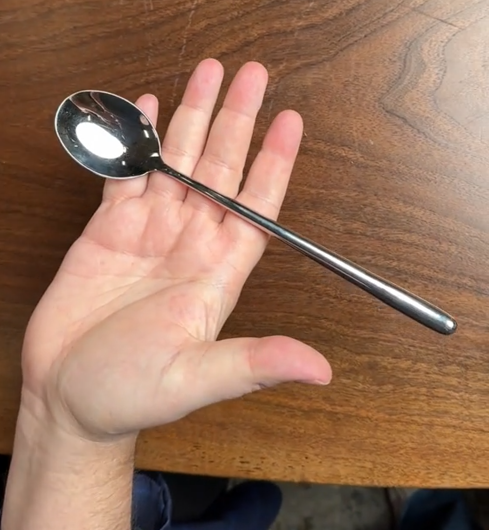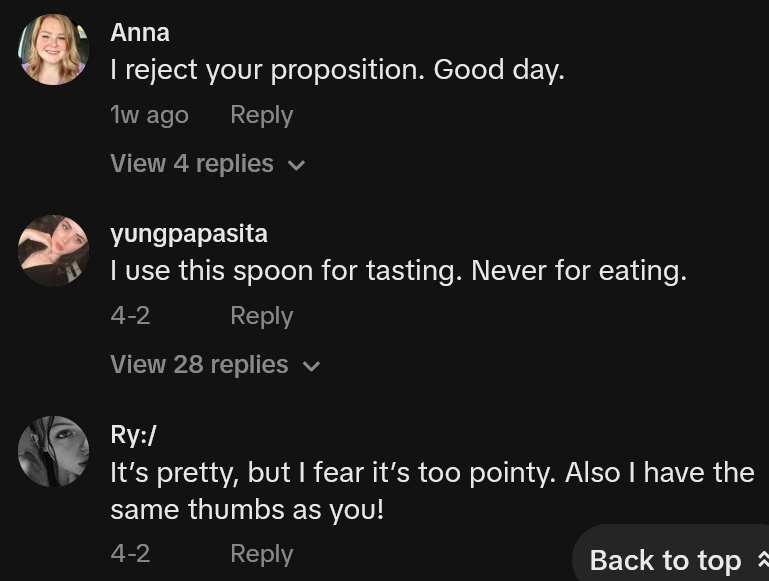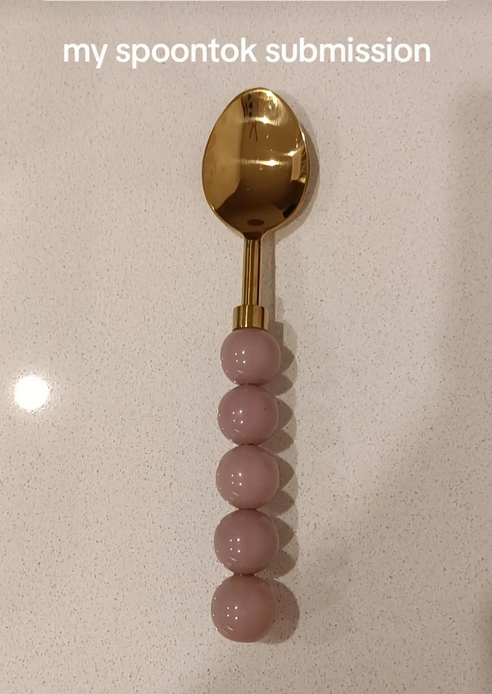A new TikTok trend dubbed “SpoonTok” has neurodivergent users—particularly those in the autistic community—submitting their favorite spoons for public rating and judgment. The concept of “spoons” as a metaphor for energy among disabled folks started in 2003 and caught on across social media in the 2010s, culminating in today’s TikTok videos showing off literal flatware.

The meme is especially popular among the autistic community, known for their tendency to have special interests that may include collecting specific objects. After a spoon submission, commenters rate it, express approval, or reject it as an ideal bit of cutlery. The hashtag #spoontok has nearly 6000 videos attributed to it, while #spoonrating currently has 740.
@isbjorninn Only the neurodivergents will get this one #spoontok #spoonjudgement #tism #tismtok #spoon #spoons #spoonrating ♬ Cello Suite No. 1 in G Major BWV 1007: I. Prelude – Sedef Erçetin
Why are people sharing spoons on TikTok?
The first known use of spoons as a symbol related to disability came from American writer Christine Miserandino. As a person with the autoimmune disease lupus, she wrote an essay in 2003 titled “The Spoon Theory” to tell the story of how she came up with the analogy.

In an attempt to explain what it’s like to deal with a chronic illness to a friend, she took all the spoons on the table at the restaurant where they were dining. Each spoon represented a bit of energy, and a disabled person could start out with more or fewer spoons at the start of each day. With every physical or mental activity they participate in, one spoon is taken away.
Once they’re out of spoons, that’s it—they can’t do anything else that day or risk getting sicker. This means that every day, they have to plan out their priorities carefully. If they have to do chores one day, they might not have enough spoons left to hang out with friends.

This framing expanded from chronic illness sufferers to all kinds of disabled people over the years, and then to neurodivergent folks like autistic people and those with ADHD. Spoons became a symbol for these communities as both a metaphor and a way to signal to each other.
The meme trend turning cutlery into a community touchstone
On March 17, 2025, TikTok user @gracekmurray posted one of the first videos asking SpoonTok to rate her spoon. She gained over 8.9 million views and 1.1 million likes with a slideshow of photos showing different angles of her fave—a simple piece with a handle that widens at the bottom, framed in a bumpy ridge.

The caption reads, “dear tism community, I present my spoon for your consideration.”
The word “tism” is short for autism.

The autistic community on TikTok leaned into these traits as the trend spread. Following in Murray’s footsteps, they posted their own favorite spoons, often to the sound of classical music and with formal-sounding requests. They frequently refer to a “council” in their requests for judgment.
On April 2, fellow autistic user @alexgrace9818 posted her own spoon, which would attract over 1.2 million views. Hers has a narrower head and a flared handle ending in a point with a small floral design in the middle.

This trend gave rise to a new kind of comment copypasta among those who don’t like the spoon presented: “I reject your proposition. Good day.” This is the top comment on Grace’s video.

What spoons have to do with autism
This trend has a special hold on the autistic section of SpoonTok, as these folks are often very sensitive to things like textures, the weight of objects, and generally how anything feels against their skin or in their hands. They’ll often have favorite objects and may become quite attached to them, finding their look and feel stimulating.

Food textures are a particularly common issue, with many autistic folks unable to eat certain things because they can’t stand how they feel in their mouths. This can sometimes extend to flatware.
Additionally, autistic people are known to have special interests that they may hyperfocus on, including specific objects that they collect. Items with an attractive shine or a certain weight can be especially attractive. Old flatware can also have a fascinating history.
The internet is chaotic—but we’ll break it down for you in one daily email. Sign up for the Daily Dot’s web_crawlr newsletter here to get the best (and worst) of the internet straight into your inbox.


